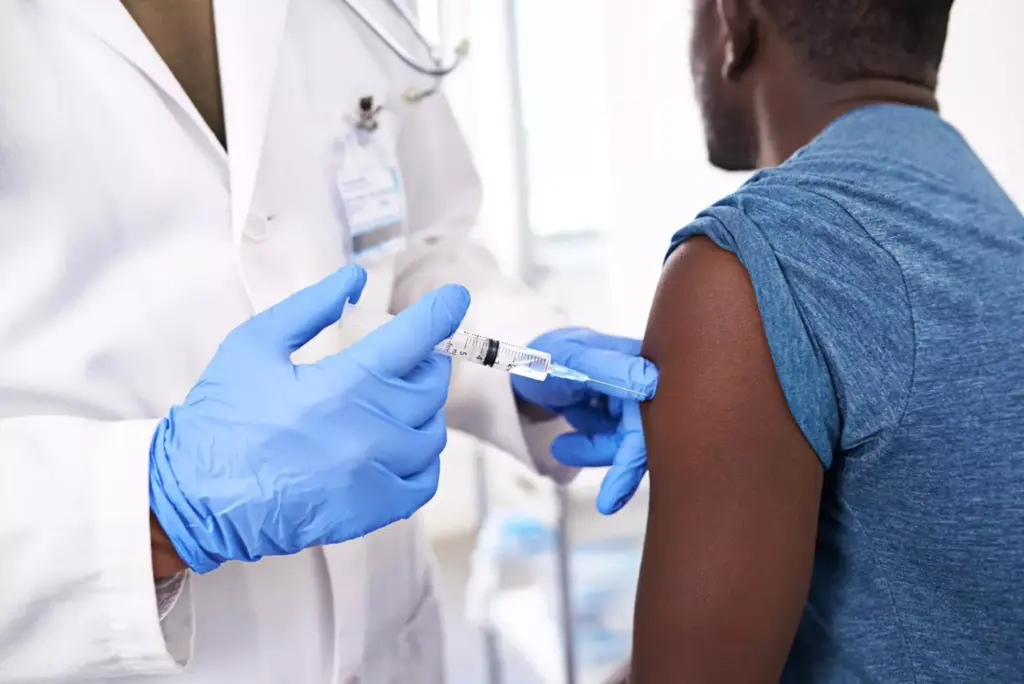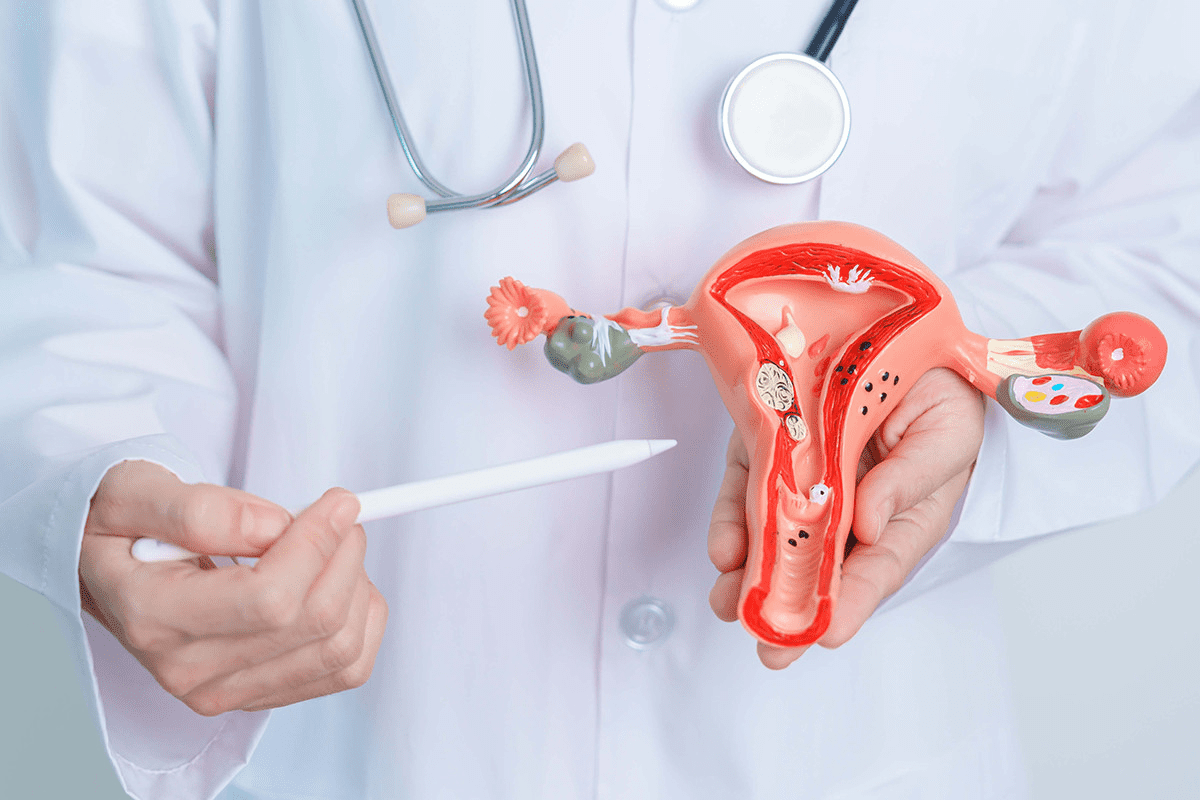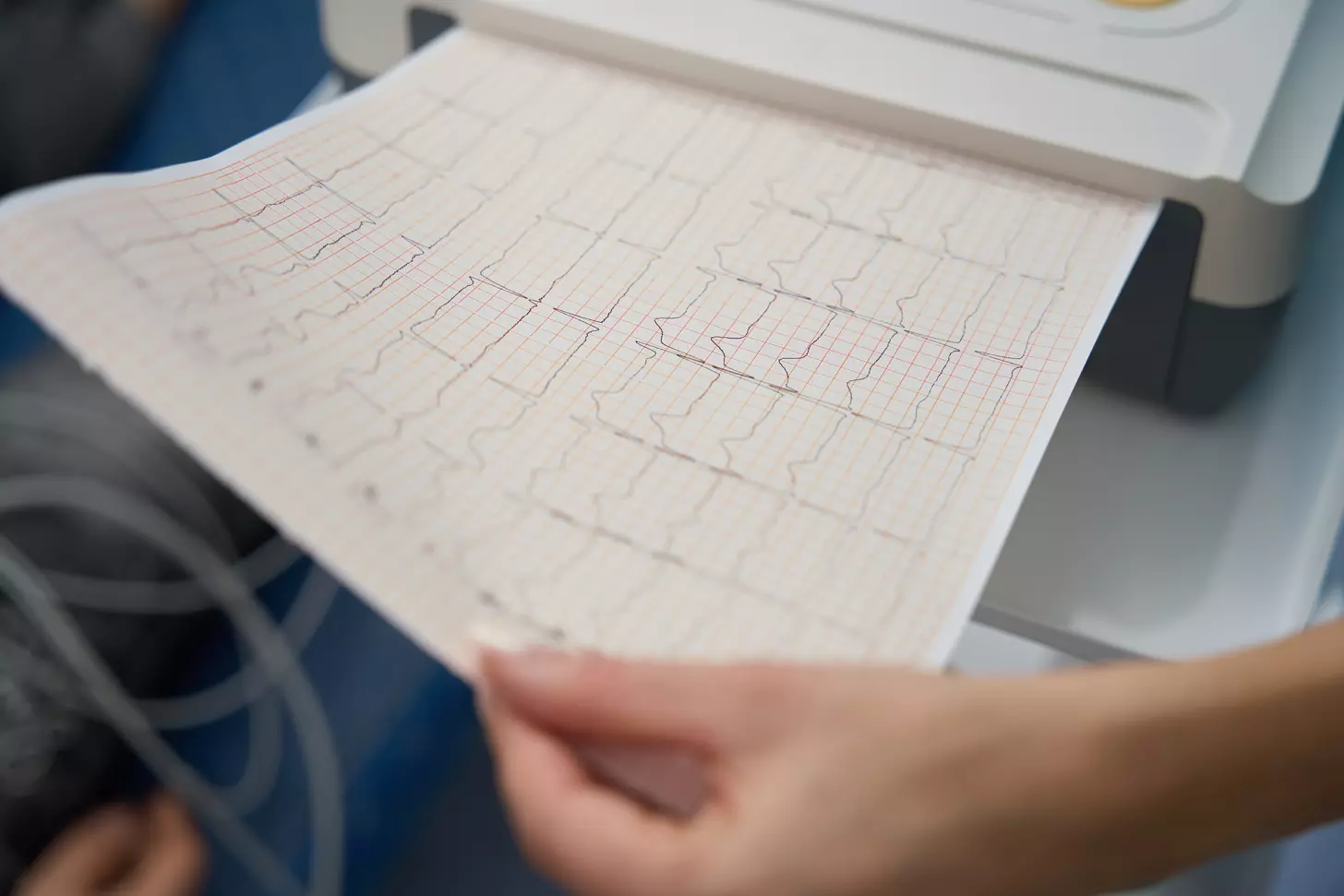Last Updated on November 26, 2025 by Bilal Hasdemir

Acute leukemia is a fast-growing cancer that affects the blood and bone marrow. It’s important to know its types, symptoms, and treatment options.
At Liv Hospital, we take acute leukemia very seriously. We offer top-notch healthcare to international patients. Our goal is to provide complete care for those with leukemia. Leukemia disrupts normal blood cell production, causing anemia, infections, and bleeding issues.
Knowing what is acute leukemia is key to managing and treating it. We are committed to giving the latest, most effective care for this tough condition.
Key Takeaways
- Acute leukemia is a rapidly progressing cancer affecting the blood and bone marrow.
- There are two major types: Acute Lymphoblastic Leukemia (ALL) and Acute Myeloid Leukemia (AML).
- Common symptoms include severe fatigue, frequent infections, and easy bruising.
- Leukemia cells can cause bone pain and impact normal blood cell production.
- Liv Hospital provides comprehensive, patient-centered care for international patients.
Understanding Acute Leukemia: A Rapidly Progressing Blood Cancer
Acute leukemia is a blood cancer that makes abnormal white blood cells fast. These cells can’t fight off infections well. Their quick growth can cause serious health problems if not treated quickly.
What Defines Acute Leukemia
Acute leukemia is known for its fast growth. It fills the bone marrow with immature blood cells. This blocks the making of normal blood cells, causing health issues.
The disease gets worse fast. Without treatment, it can be deadly. The cells, called blasts, can’t fight infections or carry oxygen like normal cells.
How It Differs from Chronic Leukemia
Chronic leukemia has more mature cells and grows slower. This means it often takes longer before treatment is needed.
| Characteristics | Acute Leukemia | Chronic Leukemia |
|---|---|---|
| Cell Maturity | Immature cells (blasts) | More mature cells |
| Disease Progression | Rapid progression | Slow progression |
| Symptoms Onset | Quick onset of symptoms | Gradual onset of symptoms |
| Treatment Urgency | Immediate treatment required | Treatment may be delayed |
Knowing the differences is key for patients and doctors to choose the right treatment. Spotting acute leukemia early can help improve treatment success.
The Two Major Types of Acute Leukemia
It’s important to know the differences between Acute Lymphoblastic Leukemia (ALL) and Acute Myeloid Leukemia (AML). These two types of leukemia have unique features, symptoms, and treatment plans.
Acute Lymphoblastic Leukemia (ALL)
Acute Lymphoblastic Leukemia (ALL) is a cancer that affects the lymphoid cells in the bone marrow. It’s the most common cancer in kids but can also happen in adults. ALL makes the bone marrow produce too many immature lymphocytes, which can lead to infections.
Symptoms of ALL include feeling tired, looking pale, getting sick often, and bruising easily. Treatment for ALL usually involves chemotherapy, targeted therapy, and sometimes a stem cell transplant. The chance of recovery from ALL depends on age and how well the body responds to treatment.
Acute Myeloid Leukemia (AML)
Acute Myeloid Leukemia (AML) is a cancer of the myeloid cells in the bone marrow. It’s caused by the fast growth of abnormal cells that block the production of normal blood cells. AML is more common in adults, especially those over 65.
Symptoms of AML include feeling tired, short of breath, bruising easily, and getting sick often. Treatment for AML often includes intensive chemotherapy and sometimes a stem cell transplant. The outcome for AML depends on age, health, and the leukemia cells’ genetic makeup.
Both ALL and AML need quick and intense treatment. We’ll look into their treatment options in more detail later.
Terminology Clarification: Acute Lymphocytic vs. Lymphoblastic Leukemia
It can be hard to understand the terms used for Acute Lymphoblastic Leukemia (ALL). The words ‘acute lymphocytic leukemia’ and ‘acute lymphoblastic leukemia’ are often mixed up. This mix-up can confuse both patients and doctors.
We will explain why these terms are used. They come from old medical ways of classifying diseases.
Why Different Terms Exist for ALL
The names “acute lymphocytic leukemia” and “acute lymphoblastic leukemia” have been used the same way. But, there are old reasons for this. At first, “acute lymphocytic leukemia” was used to talk about this disease. It focused on lymphoid cells.
As we learned more about the disease, “acute lymphoblastic leukemia” became more popular. This especially happened in kids’ medicine. It highlights the role of lymphoblasts, which are young cells.
Key reasons for the dual terminology include:
- Historical development of medical terminology
- Differences in classification systems used by various medical organizations
- Variations in usage between pediatric and adult hematology
Medical Classification Standards
Medical standards are key in diagnosing and treating ALL. The World Health Organization (WHO) and other groups have set rules for diagnosing and classifying ALL.
These rules help make sure diagnoses and treatments are the same everywhere. Using the same words helps doctors talk clearly and supports research.
Knowing why different names are used for ALL helps patients and doctors. It’s important for clear communication and good care.
Recognizing the Warning Signs and Symptoms of Acute Leukemia
Knowing the symptoms of acute leukemia is key for early treatment. We aim to give detailed info to help spot these signs.
Common Symptoms Across All Types
Acute leukemia, no matter the type, shows similar symptoms. These include persistent fatigue, fever, and increased susceptibility to infections. You might also feel unexplained weight loss and easy bruising or bleeding, like frequent nosebleeds or bleeding gums.
These signs happen because leukemia messes with the bone marrow. It stops it from making normal blood cells. This leads to many problems.
Symptoms Specific to ALL
Acute Lymphoblastic Leukemia (ALL) shows symptoms tied to lymphoid cells. You might see swollen lymph nodes, enlarged liver or spleen, and bone or joint pain. ALL can also hit the central nervous system, causing headaches, vomiting, or seizures.
Symptoms Specific to AML
Acute Myeloid Leukemia (AML) brings its own set of symptoms, tied to myeloid cells. You might feel shortness of breath, weakness, and pale skin from anemia. Some people get skin infiltration, where leukemia cells cause lesions or rashes.
Knowing these specific symptoms helps doctors figure out the exact leukemia type. This is vital for the right treatment plan.
Age Distribution and Risk Factors
It’s important to know about the age and risk factors of acute leukemia for early treatment. Acute leukemia includes types like Acute Lymphoblastic Leukemia (ALL) and Acute Myeloid Leukemia (AML). Each type has its own age-related patterns.
Childhood Acute Leukemia Patterns
ALL is the most common leukemia in kids, making up 80% of cases. It mostly happens between 2 and 5 years old. Genetic factors, like certain chromosomal issues, are key in ALL’s development in children. Known risk factors include being exposed to radiation before birth and having genetic syndromes like Down syndrome.
- Peak incidence between 2 and 5 years
- Genetic factors and chromosomal abnormalities are significant risk factors
- Exposure to ionizing radiation in utero
- Genetic syndromes like Down syndrome
Adult Acute Leukemia Patterns
AML is more common in adults, with more cases as people get older. It’s rare in young adults but increases after 60. Risk factors for AML include past chemotherapy or radiation, genetic disorders, and exposure to benzene or toxic chemicals.
- Incidence increases with age
- Previous chemotherapy or radiation therapy
- Genetic disorders
- Exposure to benzene or other toxic chemicals
Known Risk Factors and Causes
While we don’t know all causes of acute leukemia, some risk factors are known. These include genetic mutations, exposure to chemicals and radiation, and past cancer treatment. Some people might be at higher risk because of their family history or genetics.
Genetic and environmental factors mix to cause acute leukemia. Knowing these risks helps us prevent and treat it better.
Diagnostic Approaches for Acute Leukemia
We use a mix of tests to find acute leukemia. This ensures we diagnose it quickly and accurately. These tests help us know the type and how far it has spread.
Initial Blood Tests and Physical Examination
The first step is a physical check and blood tests. Doctors look for signs like anemia or bleeding. Blood tests check for abnormal white and red blood cells.
Key findings from initial blood tests may include:
- Abnormal white blood cell counts
- Low red blood cell counts (anemia)
- Low platelet counts (thrombocytopenia)
| Test | Normal Range | Possible Findings in Acute Leukemia |
|---|---|---|
| White Blood Cell Count | 4,500 – 11,000 cells/μL | Abnormally high or low counts |
| Red Blood Cell Count | 4.32 – 5.72 million cells/μL (men) | Low counts (anemia) |
| Platelet Count | 150,000 – 450,000 cells/μL | Low counts (thrombocytopenia) |
Bone Marrow Biopsy and Aspiration
If tests hint at leukemia, we do a bone marrow biopsy. This takes a bone marrow sample for study. It shows if leukemia cells are there and what type it is.
Advanced Diagnostic Techniques
Advanced tests are key to confirming and understanding leukemia. These include:
- Genetic testing for specific mutations
- Flow cytometry to study leukemia cell proteins
- Molecular testing for genetic abnormalities
These tests help us create the best treatment plan for each patient. This improves their chances of beating leukemia.
Treatment Strategies for Acute Leukemia
Effective treatment strategies for acute leukemia are crucial for improving patient outcomes. We will explore the various approaches used to combat this disease, including chemotherapy, targeted therapy, and stem cell transplantation.
Chemotherapy Protocols
Chemotherapy remains the cornerstone of acute leukemia treatment. Intensive chemotherapy regimens are often used to induce remission, followed by consolidation therapy to prevent relapse. The specific chemotherapy protocol used can vary depending on the type of acute leukemia, patient age, and overall health.
For instance, a study on Tuspetinib, a novel therapy, showed promising results in treating AML, highlighting the ongoing evolution of chemotherapy protocols.
Targeted Therapy Options
Targeted therapy has emerged as a valuable addition to acute leukemia treatment. These therapies specifically target cancer cells, reducing harm to healthy cells. Examples include tyrosine kinase inhibitors for certain types of acute leukemia.
“The introduction of targeted therapies has revolutionized the treatment landscape for acute leukemia, offering new avenues for improving patient outcomes,” says a leading hematologist.
Stem Cell Transplantation
Stem cell transplantation, also known as bone marrow transplantation, is a critical treatment option for some patients with acute leukemia. This procedure involves replacing the patient’s diseased bone marrow with healthy stem cells, either from the patient themselves (autologous transplant) or a donor (allogeneic transplant).
Supportive Care During Treatment
Supportive care is an essential component of acute leukemia treatment, focusing on managing symptoms, preventing infections, and maintaining the patient’s overall health. This may include blood transfusions, antibiotics, and other supportive measures to help patients tolerate intensive therapies.
By combining these treatment strategies, we can significantly improve outcomes for patients with acute leukemia. Ongoing research continues to refine these approaches, offering hope for even better treatments in the future.
Survival Rates and Prognosis Factors
Acute leukemia is a fast-growing blood cancer. Its survival rates depend on several factors. Knowing these factors helps patients and doctors make better treatment choices.
Current Survival Statistics for ALL
Acute Lymphoblastic Leukemia (ALL) survival rates have greatly improved, especially in kids. The five-year survival rate for children with ALL is over 90%. For adults, the rates have also gone up, but not as high as in kids.
Key statistics for ALL survival rates include:
- Children: Over 90% five-year survival rate
- Adults: Approximately 60-70% five-year survival rate
Current Survival Statistics for AML
Acute Myeloid Leukemia (AML) has a tougher prognosis than ALL, especially for adults. The five-year survival rate for AML patients is about 40%. But, this rate changes a lot based on age and other factors.
Key statistics for AML survival rates include:
- Adults under 60: Approximately 40-50% five-year survival rate
- Adults over 60: Lower survival rates, around 10-20%
Factors That Influence Prognosis
Many factors affect the prognosis of acute leukemia patients. These include genetic mutations, how well the patient responds to treatment, and their overall health.
Genetic mutations are very important in determining the prognosis. Some genetic changes can make the leukemia more aggressive or hard to treat.
Other factors that influence prognosis include:
- Age at diagnosis
- Response to initial treatment
- Presence of certain genetic mutations
- Overall health of the patient
Every patient’s situation is different, and prognosis can vary a lot. It’s key for patients to talk about their individual prognosis with their healthcare provider.
Recent Advances in Acute Leukemia Research
In recent years, we’ve seen big steps forward in acute leukemia research. This brings new hope to those fighting this disease. We’re entering a new era in treating acute leukemia, thanks to better understanding of the disease and new treatments.
Breakthrough Treatments in the Last Decade
In the last ten years, we’ve seen major changes in treating acute leukemia. Targeted therapies have been a big leap forward. These treatments aim to hit cancer cells hard while keeping healthy cells safe. For example, tyrosine kinase inhibitors have greatly helped some patients with acute leukemia.
Immunotherapy has also made big strides. It uses the body’s immune system to fight cancer. CAR-T cell therapy, a type of immunotherapy, has shown great promise in treating certain types of acute leukemia. Studies show it can lead to complete remission in many patients who had few options left.
A recent clinical trial found CAR-T cell therapy has changed the game for relapsed or refractory ALL. It offers a chance for a cure for those who’ve tried many treatments. The medical community is excited about these breakthroughs and their potential to save lives.
Promising Areas of Ongoing Research
Research is ongoing to make treatments better and safer. One area is novel combination therapies. These aim to make treatments work better and have fewer side effects. Researchers are also looking into precision medicine for acute leukemia, tailoring treatments to each patient’s genetic makeup.
Advances in stem cell transplantation are also promising. Better donor matching, treatment plans, and care after transplant are leading to better survival rates and quality of life for patients.
As we learn more about acute leukemia and develop new treatments, we’re dedicated to giving our patients the best care. The future of treating acute leukemia looks bright, with ongoing research leading to more effective and personalized treatments.
Living with Acute Leukemia: Patient and Family Considerations
Living with acute leukemia is tough for patients and their families. It changes life in many ways, affecting health and emotions.
Coping Strategies During Treatment
Dealing with acute leukemia needs a strong support system and good coping strategies. Emotional support is key, coming from family, friends, or support groups. It’s important to stay connected and ask for help when needed.
“The emotional toll of cancer treatment should not be underestimated,” says a leading oncologist. “Patients need a strong support network to navigate the challenges of treatment.”
- Maintain open communication with healthcare providers.
- Join support groups to connect with others facing similar challenges.
- Engage in activities that promote mental and emotional well-being.
Long-term Effects and Follow-up Care
Survivors of acute leukemia may face long-term effects like organ damage and secondary cancers. Regular follow-up care is key to manage these issues.
A good follow-up care plan should include:
- Regular check-ups with healthcare providers.
- Monitoring for late effects of treatment.
- Support for managing emotional and psychological challenges.
Support Resources for Patients and Families
Having access to support resources is crucial for patients and families. This includes financial help, counseling, and educational materials. Cancer support organizations offer valuable guidance and resources.
As one patient shared, “The support from our cancer support group was priceless. It helped us through the tough times and gave us emotional support.”
By using these resources and staying proactive about health, patients and families can face the challenges of living with acute leukemia better.
Conclusion: The Future of Acute Leukemia Care
Looking ahead, the future of acute leukemia care is bright. Ongoing research and new treatments are leading to better results for patients. We’re learning more about acute leukemia, which helps us find better ways to treat it.
New therapies like targeted and immunotherapy are changing how we treat acute leukemia. These breakthroughs give patients new hope. They show that there are effective ways to fight this disease.
We’re excited for the future of treating acute leukemia. It will focus on treatments that are tailored to each patient. As we learn more about what causes acute leukemia, we’ll find even better treatments.
FAQ
What is acute leukemia?
Acute leukemia is a fast-growing blood cancer. It affects the bone marrow and blood. It’s caused by abnormal white blood cells growing too much.
What are the main types of acute leukemia?
There are two main types: Acute Lymphoblastic Leukemia (ALL) and Acute Myeloid Leukemia (AML). ALL affects lymphoid cells, while AML affects myeloid cells.
What are the symptoms of acute leukemia?
Symptoms include fatigue, weight loss, fever, and bone pain. ALL can cause swollen lymph nodes. AML can cause bleeding gums.
How is acute leukemia diagnosed?
Diagnosis uses blood tests, bone marrow biopsy, and advanced tests like imaging and genetic testing.
What are the treatment options for acute leukemia?
Treatments include chemotherapy, targeted therapy, stem cell transplantation, and supportive care. The choice depends on the leukemia type, patient age, and other factors.
What is the difference between acute lymphocytic leukemia and acute lymphoblastic leukemia?
Acute lymphocytic leukemia and acute lymphoblastic leukemia are the same condition, ALL. The terms vary by region and history.
What are the risk factors for developing acute leukemia?
Risk factors include exposure to chemicals, radiation, and genetic predisposition. Age also plays a role, with risk increasing with age.
Can acute leukemia be cured?
Cure chances depend on the leukemia type, patient age, and treatment response. Advances have improved survival rates, especially for children with ALL.
How does Liv Hospital support international patients with acute leukemia?
Liv Hospital offers comprehensive care for international patients. This includes diagnosis, treatment, and supportive services. Our team provides world-class healthcare with personalized support.
What are the latest advances in acute leukemia research?
Recent breakthroughs include targeted therapies and improved stem cell transplantation techniques. Ongoing research aims to find new treatments and improve outcomes.
How can patients and families cope with a diagnosis of acute leukemia?
Coping involves medical treatment, emotional support, and practical resources. Patients and families can access support services, counseling, and educational resources to face diagnosis and treatment challenges.
FAQ
What is acute leukemia?
Acute leukemia is a fast-growing blood cancer. It affects the bone marrow and blood. It’s caused by abnormal white blood cells growing too much.
What are the main types of acute leukemia?
There are two main types: Acute Lymphoblastic Leukemia (ALL) and Acute Myeloid Leukemia (AML). ALL affects lymphoid cells, while AML affects myeloid cells.
What are the symptoms of acute leukemia?
Symptoms include fatigue, weight loss, fever, and bone pain. ALL can cause swollen lymph nodes. AML can cause bleeding gums.
How is acute leukemia diagnosed?
Diagnosis uses blood tests, bone marrow biopsy, and advanced tests like imaging and genetic testing.
What are the treatment options for acute leukemia?
Treatments include chemotherapy, targeted therapy, stem cell transplantation, and supportive care. The choice depends on the leukemia type, patient age, and other factors.
What is the difference between acute lymphocytic leukemia and acute lymphoblastic leukemia?
Acute lymphocytic leukemia and acute lymphoblastic leukemia are the same condition, ALL. The terms vary by region and history.
What are the risk factors for developing acute leukemia?
Risk factors include exposure to chemicals, radiation, and genetic predisposition. Age also plays a role, with risk increasing with age.
Can acute leukemia be cured?
Cure chances depend on the leukemia type, patient age, and treatment response. Advances have improved survival rates, especially for children with ALL.
How does Liv Hospital support international patients with acute leukemia?
Liv Hospital offers comprehensive care for international patients. This includes diagnosis, treatment, and supportive services. Our team provides world-class healthcare with personalized support.
What are the latest advances in acute leukemia research?
Recent breakthroughs include targeted therapies and improved stem cell transplantation techniques. Ongoing research aims to find new treatments and improve outcomes.
How can patients and families cope with a diagnosis of acute leukemia?
Coping involves medical treatment, emotional support, and practical resources. Patients and families can access support services, counseling, and educational resources to face diagnosis and treatment challenges.
The references provided cover information about both Acute Lymphoblastic Leukemia (ALL) and Acute Myeloid Leukemia (AML).
Specifically:
- References 1, 2, 3, and 4 primarily discuss Acute Lymphoblastic Leukemia (ALL).
- Reference 5 discusses Acute Myeloid Leukaemia (AML).
Here is a consolidated list focusing on key facts and treatment themes for Acute Leukemia derived from these sources, with clear references for the specific type where applicable.
Key Facts and Treatment Themes for Acute Leukemia (ALL & AML)
- Definition and Onset
- Acute leukemias (both ALL and AML) are aggressive cancers that start in the bone marrow, where immature blood cells proliferate rapidly and crowd out healthy blood production.
- The term “acute” signifies the rapid progression of the disease, necessitating prompt and intensive treatment. (NCBI, NHS, NCI)
- Cell Lineage Distinction
- Acute Lymphoblastic Leukemia (ALL): Affects the lymphoid line of white blood cells (lymphocytes). It is the most common form of cancer in children, though it also occurs in adults. (NCI, AAFP)
- Acute Myeloid Leukemia (AML): Affects the myeloid line of blood cells (including cells that mature into red blood cells, platelets, and most other white blood cells). It is generally more common in adults. (NHS)
- Treatment Approach: Chemotherapy
- Induction Chemotherapy is the initial, intensive phase used for both ALL and AML. The goal is to rapidly destroy leukemic cells and achieve complete remission (no signs of cancer in the bone marrow). (NCI, NCBI)
- Post-Remission Therapy (Consolidation/Intensification) follows induction to eliminate any remaining undetected leukemia cells and prevent relapse. (NCI, NCBI)
- Maintenance Therapy (primarily for ALL) is a less intensive, long-term phase (often lasting 2–3 years) to prevent the recurrence of the disease. (NCI, Blood Cancer United)
- Specialized Treatments
- Targeted Therapy: Drugs that focus on specific genetic or protein changes in the cancer cells (e.g., tyrosine kinase inhibitors for ALL with the Philadelphia chromosome) are often integrated into treatment plans. (NCI)
- Stem Cell Transplantation (Bone Marrow Transplant): This is a potentially curative option, especially for high-risk ALL or AML, or when the cancer has relapsed. It replaces the patient’s diseased bone marrow with healthy donor cells. (NCI, NCBI)
- CNS Prophylaxis: In ALL, treatment often includes preventative measures to ensure leukemia cells do not spread to the Central Nervous System (brain and spinal cord), often via chemotherapy injected into the spinal fluid. (NCI)
- Symptoms
- Symptoms for both ALL and AML are similar, generally caused by the deficiency of healthy blood cells, leading to anemia, infection, and bleeding problems. Common signs include fatigue, easy bruising/bleeding, and recurrent infections/fever. (AAFP, Blood Cancer United, NHS)
FAQ
What is acute leukemia?
Acute leukemia is a fast-growing blood cancer. It affects the bone marrow and blood. It’s caused by abnormal white blood cells growing too much.
What are the main types of acute leukemia?
There are two main types: Acute Lymphoblastic Leukemia (ALL) and Acute Myeloid Leukemia (AML). ALL affects lymphoid cells, while AML affects myeloid cells.
What are the symptoms of acute leukemia?
Symptoms include fatigue, weight loss, fever, and bone pain. ALL can cause swollen lymph nodes. AML can cause bleeding gums.
How is acute leukemia diagnosed?
Diagnosis uses blood tests, bone marrow biopsy, and advanced tests like imaging and genetic testing.
What are the treatment options for acute leukemia?
Treatments include chemotherapy, targeted therapy, stem cell transplantation, and supportive care. The choice depends on the leukemia type, patient age, and other factors.
What is the difference between acute lymphocytic leukemia and acute lymphoblastic leukemia?
Acute lymphocytic leukemia and acute lymphoblastic leukemia are the same condition, ALL. The terms vary by region and history.
What are the risk factors for developing acute leukemia?
Risk factors include exposure to chemicals, radiation, and genetic predisposition. Age also plays a role, with risk increasing with age.
Can acute leukemia be cured?
Cure chances depend on the leukemia type, patient age, and treatment response. Advances have improved survival rates, especially for children with ALL.
How does Liv Hospital support international patients with acute leukemia?
Liv Hospital offers comprehensive care for international patients. This includes diagnosis, treatment, and supportive services. Our team provides world-class healthcare with personalized support.
What are the latest advances in acute leukemia research?
Recent breakthroughs include targeted therapies and improved stem cell transplantation techniques. Ongoing research aims to find new treatments and improve outcomes.
How can patients and families cope with a diagnosis of acute leukemia?
Coping involves medical treatment, emotional support, and practical resources. Patients and families can access support services, counseling, and educational resources to face diagnosis and treatment challenges.
aa








